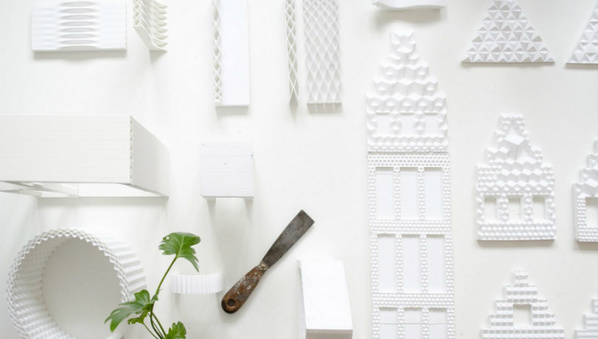Optimists tend to envision a future with perfectly automated cities, full of technology and without poverty or hunger. Most tend not to think of the path needed to create this new urban fabric, as if it will miraculously emerge like the futuristic, planned settlement of Masdar City in Abu Dhabi.
But that is not the most probable scenario for the future of cities — at least, not if we keep supporting broken models of urban planning.
Consider housing. It may sound absurd, but when conventional construction methods (concrete blocks and mortar) are used to build 100 square metres in the developing world, up to 45 per cent of raw materials are wasted. In most cities, one house can take up to three years to build, at a cost up to US$30,000.
Globally, UN-Habitat estimates that three billion people are already in need of a house, and this number is set to double over the next 15 years. So even if local governments pour more money into infrastructure, they will fail to meet people’s needs before a city turns into a vast slum.
It’s high time we adopted new techniques to address the pressing housing and shelter crisis. I am not only referring to slums, to post-disaster reconstruction in Haiti or Nepal or to the refugee crisis in the Middle East, North Africa and Europe. I am also referring to the whole approach of urbanisation and construction: we have to entirely rethink how we build, plan and regulate. We need to build not only more, but better.
But we have the technological tools and intellect needed to tackle the challenge. 3D printing is one example. It was originally created more than 30 years ago, but is now establishing itself as a feasible marketable product and a truly scalable technology.
Printing pioneers
3D printing technology is based on additive manufacturing (making something by depositing material in layers) and digital fabrication technologies. A handful of companies and research groups around the world are experimenting with it for shelter and housing purposes.
“We have to entirely rethink how we build, plan and regulate. We need to build not only more, but better.”
Anielle Guedes
One is WASP, an Italian research group that has created a 12-metre-tall 3D printer that can print huts using clay. Its main goal is to provide shelter in desert regions, such as North Africa, where it has printed its first structures. WASP believes in using local materials to avoid the logistical and environmental costs of transporting building materials or quarrying.
WinSun, in China, has developed a method of printing tiny houses out of pre-moulded concrete. The technology’s inventor claims each unit can be built for less than US$5000 and can be printed in 15 days, ready for assembly over just three hours. The company plans to open 100 manufacturing plants in the next couple of years.
Another one is Urban3D, a Brazilian start-up, which I founded and lead. Urban3D takes a different approach. For us, being able to scale up products, both in physical size and in terms of serving thousands of people, is crucial. That is why we focus on using printing to create a cheaper, cleaner, faster and more sustainable process than traditional construction methods to build multistorey concrete buildings for urban areas.
Cost-effectiveness is an important part of the puzzle too, motivating us to look into recycled composites to make a new type of concrete. This material reduces the cost of a 3D-printed house by 30 per cent on average. As the technology evolves, we expect the process to become more than 80 per cent cheaper and at least ten times faster than mainstream prefabrication construction methods (building sections made in a factory).
Layer by layer
For now, the use of 3D printing in construction is mainly in the form of FDM (fused deposition modelling): the technique of depositing materials layer by layer, just like making a cake, and letting them dry naturally. Only concrete, mud or sand-based materials can be used for this process.
Plastic printing, for instance, which would make PVC pipes for plumbing, is not yet possible — at least not in a way that would make them cheaper than conventionally made PVC pipes.
But the promise of 3D printing is tremendous, especially considering that, every year, the technology’s cost halves, while its speed and printing area doubles.
Cost, speed and the availability of materials are critical challenges to any new construction system, particularly in the developing world, where demand is higher and funds limited. Those three parameters, along with social aspects of housing provision, create a complex scenario not only technologically but also politically, economically and legally.
Future improvements to 3D printing for housing should include greater architectural flexibility, compliance to international building codes and full automation of the construction process. For instance, natural fibres such as bamboo would need to be incorporated into building codes.
Such improvements will bring to the world the fastest, and perhaps the cheapest and greenest, way to build ever devised, not only for the poor but for everyone. I firmly believe that technology only enhances and deepens what we’re already doing — which is to say that technology alone will not save the day. Implementation is key to success. And because it is a complex process, not only companies and local governments but a number of stakeholders must be involved.
Considering the massive scale of the urban crisis, which means that more infrastructure will be needed in the next 35 years than in the last 3,500 years, we must use more efficient building methods, and involve all stakeholders in the conversation.
Anielle Guedes is CEO and founder of Urban3D in Sao Paulo, Brazil. She can be contacted at anielle@urban3d.co
This article is part of our Spotlight on Shelter crisis: Rebuilding after the storm.
